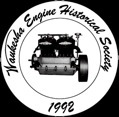The Motor Works - Part 7 (added September 2014 - corrections made October 2014)
Government, hospital sectors spur growth for Waukesha Motor
 |
JOHN SCHOENKNECHT |
Company briefly considered move before sale
The 1960s
This was a decade of change for Waukesha Motor. One of the biggest changes occurred when James DeLong retired as president of the company in October of 1960. He was 71 years old. DeLong certainly guided the company through a period of huge growth.
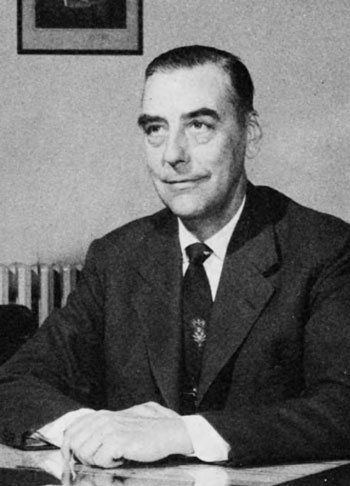 |
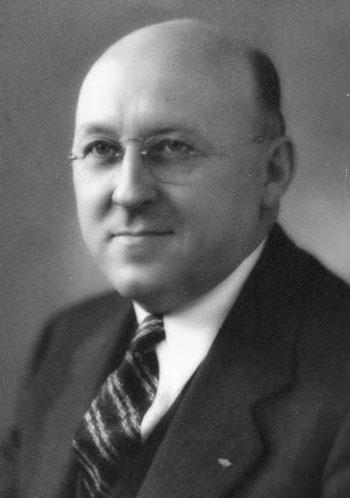 |
| Photo from the Waukesha County Museum | Photo from the Waukesha County Museum |
| Charles Nelson | James DeLong |
His successor, Charles Nelson, was a local boy. He attended Union Grade School, St. John’s Military Academy and the University of Wisconsin-Madison, where he earned many honors. Later in life, one of his favorite hobbies was square dancing. He was married to Mary Haven in 1928 and they had two children, Sylvia (Moldenhauer) and Spencer.
Nelson joined Waukesha Motor in 1929 in the financial department. He became factory production manager in 1934. In 1947, he was given the position of assistant to the president. In 1949, he became vice president for production. He was elected to the board of directors in 1951 and advanced as secretary- treasurer of the company and then executive vice president.
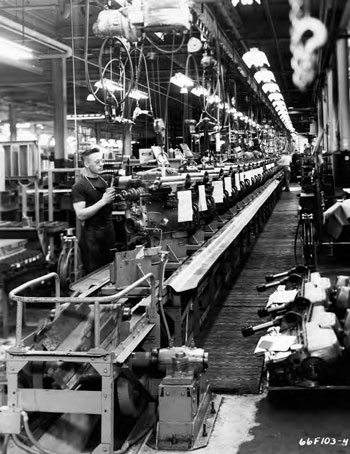 |
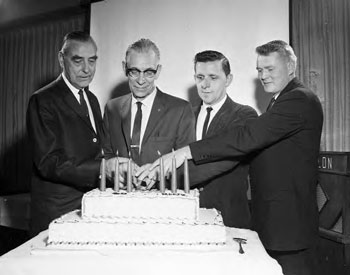 |
| Freeman photo from the Waukesha County Museum | |
| Celebrating Waukesha Motors 60th anniversary in June of 1966 were, from left, Charles Nelson, Jack LaBelle, Stan Kasprzak and Lionel Dufenhorst. | |
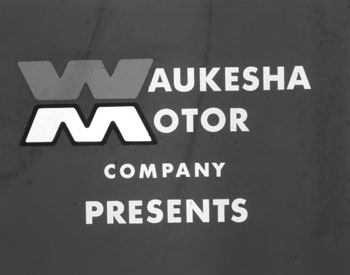 |
|
| Photo from the Waukesha Engine Historical Society | Photo from the John Schoenknecht collection at the Waukesha County Museum |
| 1966 - Dale Lueck in the assembly area, line 2. | Color glass slide showing new logo. |
The oil field market grew through the decade as natural gas compression units gained in importance.
Sales to local units of government, states and the federal government also grew.
Hospitals were another source of sales as they needed backup power in case of an outage.
A few highlights of the decade are listed below.
In 1960, Waukesha acquired the O&M Manufacturing of Houston, Texas. The company built radiators and heat exchangers. The company operated as a subsidiary and a distribution center for the southwestern states.
In 1961, Waukesha generators, with the popular Enginator system, were installed at Nike sites. The Nike sites contained Nike missiles, a defense system designed to repel an attack by the Soviet Union.
A terrible accident occurred in 1961 in the testing room. Harlow Bielefeldt was severely burned in a gas explosion. I talked to his former daughter-in-law Sylvia Trewyn. According to her, Horlow had third-degree burns over 85 percent of his body. She saw him at Waukesha Memorial Hospital shortly after the accident. Bielefeldt was then transferred to the burn unit at Columbia Hospital in Milwaukee. He was put into a coma for three months. He underwent a slow and painful series of skin grafts.
“The only thing he could tolerate on his body for a long time was a bedsheet with a hole cut out for his head,” recalled Trewyn. “He was in pain for months and months.”
Because of his injuries, Bielefeldt was not forced to retire, but he did retire. In fact, he had a small “gentleman farm.” Several years after his burn accident he lost part of his right arm when it was caught in a corn picker.
Later in the decade, NASA purchased a unit for the Manned Spacecraft Center in Texas. These are but two of the large government contracts that kept the company strong.
The following year, 1962, saw the introduction of new logo. A large “W” placed over an “M” replaced the script letter “W” which had been used previously.
In 1963, Waukesha Motor acquired the Cerlist Diesel Engine Co. of Burlington N. C., a maker of small aluminum engines. The company moved Cerlist’s operations to Clinton, Iowa.
It was also in 1963 that a new numbering system was introduced. It was based on cylinders, displacement and an alphabetical code.
In 1964, Waukesha Motor moved into the computer age when Honeywell data processors were introduced to the company. The machines kept track of the inventory of more than 50,000 types of parts. The computers ran with a tape drive and had to be stored in rooms that were constantly kept at 72 degrees.
The original Waukesha Motor building on North Street was donated to the Junior Achievement program. After the company moved to its new quarters, the old building either sat vacant or was used for storage. For 10 or 12 years previous to 1964, the advertising department stored bulky materials in the building. The Junior Achievement program was run by the Jaycees.
In 1965, a packaged gas-turbine generator, known as the “Turbinator” was produced. It was also in 1965 that a “Retirement Club” was formed with workers who had officially retired from the company. Regular meetings on the first Tuesday of the month were scheduled. Games of sheepshead proved to be one of the most popular activities.
The following year, with an engine named the Model L1616, the company introduced the “VC” series of high-speed, high-output compact engines. The smaller motors had a variety of uses and were a stable product for many years. The engine was even modified for use by the U.S. Navy.
In 1967, the VHP (Very High Power) series of engines went into production. These were the top of the line engines in terms of power.
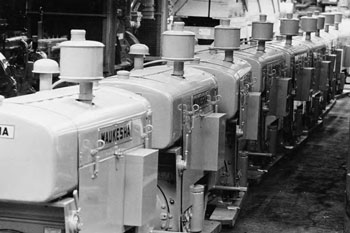 |
| Freeman file photo |
| The unit assembly line, 1970s. |
It was also a year that Cooper Industries of Texas became interested in buying the Waukesha Motor Co. (which was not resistant to the sale). Cooper was active in the oil fields of Texas and manufactured engines and tools. The two companies seemed like a good fit. They signed papers that allowed Cooper to buy the Waukesha Motor Co., but the deal was nixed by the Justice Department.
The canceled acquisition let buyers know that Waukesha Motors was available. In 1968, the Bangor Punta Corp. acquired the Waukesha Motor Co. But before the deal was finalized, a third company, Southern Gulf Utilities, tendered an offer which was eventually turned down. Bangor Punta was a huge conglomerate of diverse companies, but it let Waukesha operate pretty much on its own.
In 1969, the company built the VHP Model P9890G. It was the company’s first 16- cylinder engine.
The 1970s
This decade was an up and down time for the company. Economic conditions across the country caused problems, but with creative thinking and new leaders, Waukesha Motors prospered.
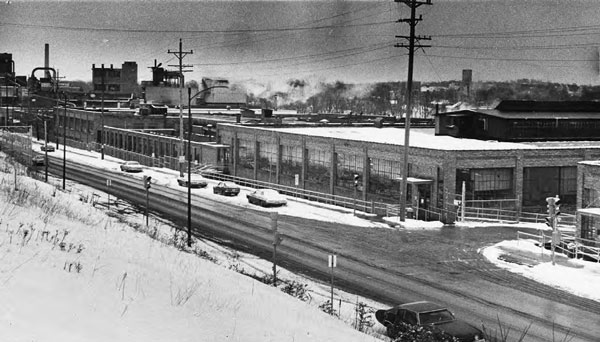 |
| Freeman photo |
| The Waukesha Motor Co. as seen 1973. Grede Foundry can be seen in the background. |
1970
In February 1970, Charles Nelson retired from the company and took a seat on the board of directors of the Bangor Punta company. The new president was Robert D’Armour, another Waukesha Motors veteran. He graduated from Michigan Tech in 1948. In 1952 D’Armour began his Waukesha Motor career in the sales department, and worked his way up the ladder. He was senior vice president of marketing before assuming the presidency. D’Armour lived in Oconomowoc with his wife and eight children.
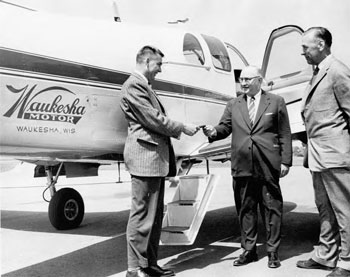 |
| Photo from the Waukesha Engine Historical Society |
| Company Airplane. Waukesha Motor Co. had its own airplane. Here, president James DeLong (center) is accepting the keys while vice president Charles Nelson watches. |
Michael Goc wrote:
“From his position as chief of sales, D’Armour could see that the company was on the right course and that expansion within the closely linked niches of industrial motors and electrical generator units was the correct heading for the future.”
Thus, in 1971 the Special Products Division, renamed Waukesha Power Systems, moved to a new, off-site location. It focused on designing, assembling and testing engine-generator sets and their controls. Although the company produced fewer of the giant units, the profits from them was higher.
Also in 1971, Waukesha obtained the license to build and sell Swedish-based Scania diesel engines. They operated in the 100 hp to 300 hp range. The engines were eventually redesigned to operate with gas. They become the VS series of engines.
During the late 1960s andearly 1970s, the company announced plans to move to new facilities in both the town of Summit and Hartland. The company went so far as to purchase land, but neither of the ventures took place. Waukesha was home and remained so.
In 1973, a strike was averted at the last minute when members of the International Association of Machinists approved a new contract by a vote of 460-220. The contract called for a raise of 82¢ an hour over two years and numerous other benefits.
The year 1973 saw the completion of the World Trade Center in New York. In the sixth level basement of the complex, five Waukesha Motors powered the backup power source. The units supplied power to corridors, stairwells, lobbies, exits, elevators and alarm systems.
Waukesha Motors introduced its first 16-cylinder diesel engine in 1973.
(John Schoenknecht can be reached at thbolt@wi.rr.com.)
This article was originally published in the Wednesday, February 19, 2014 issue of The Freeman Waukesha County's newspaper.
Copyright © 2014 Waukesha Engine Historical Society, Inc. All rights reserved
